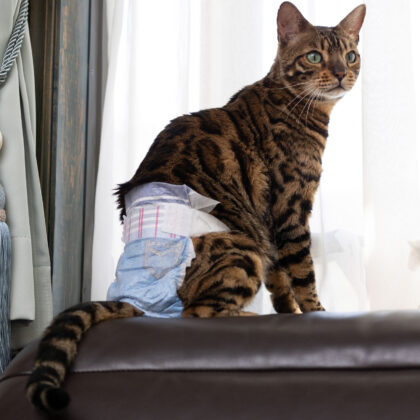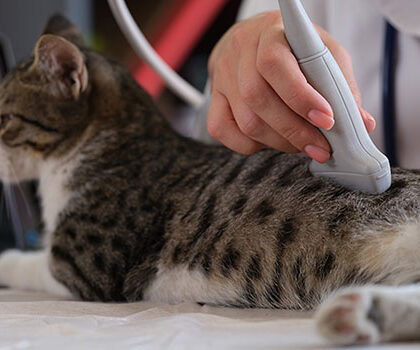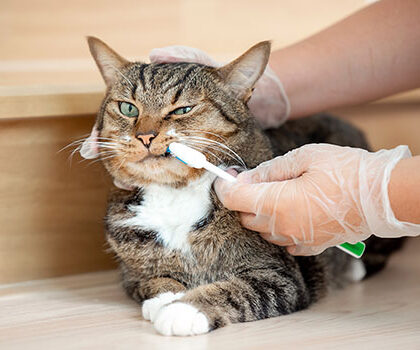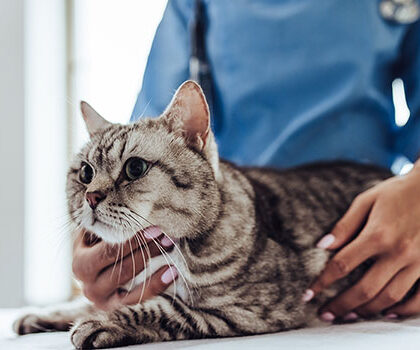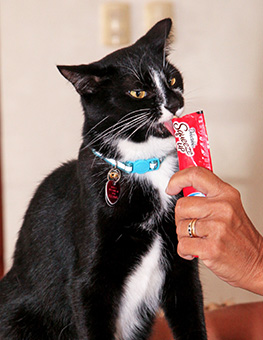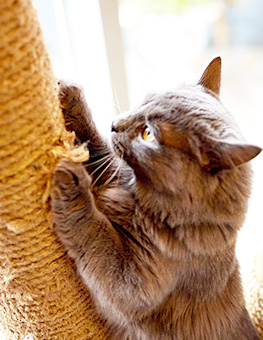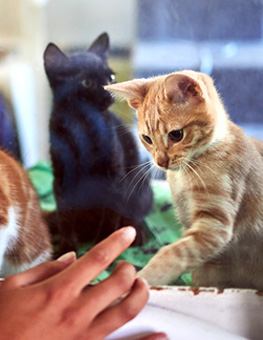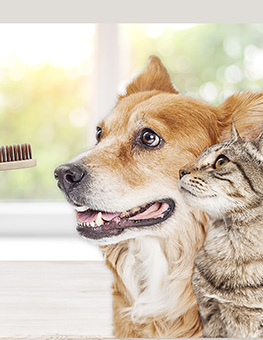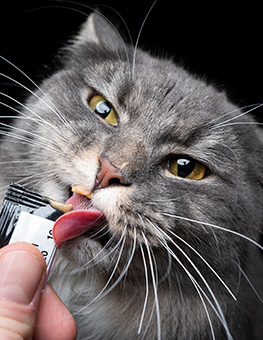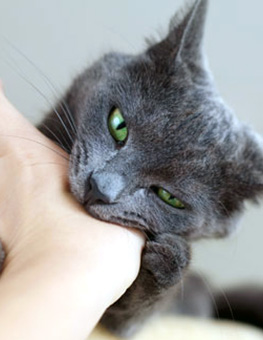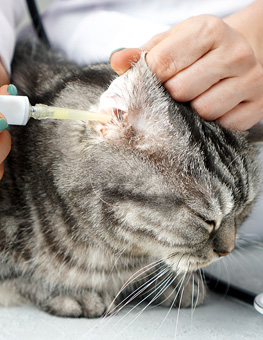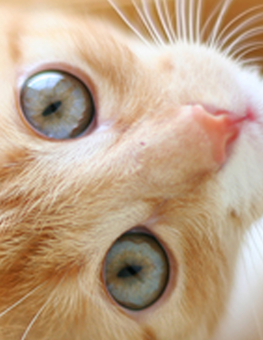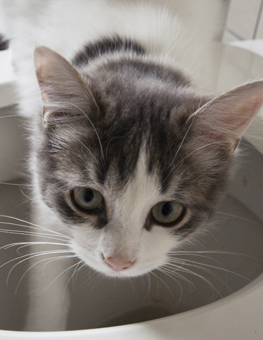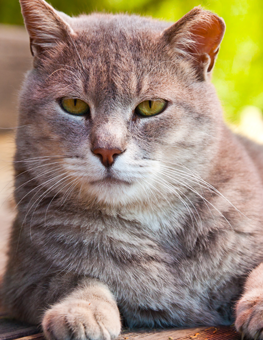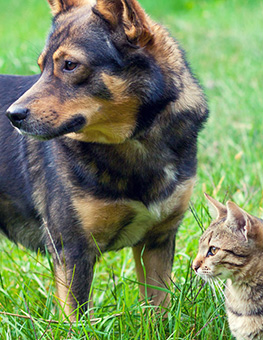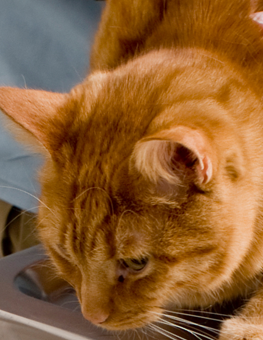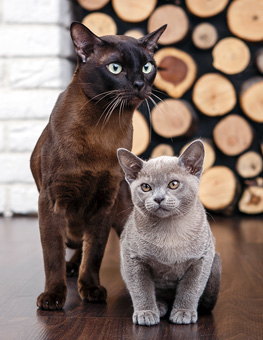Looking Good, Feline Good: Making Your Cat’s Vet Trip Less Stressful
Nationally, only 1 cat is seen by a veterinarian for every 5 dogs, even though there are several million more pet cats in the U.S. than dogs.
A survey discovered that the older cats become, the less likely they are to be seen by a veterinarian unless they are assumed to be sick. This news is worrisome, since cats are masterminds at hiding illness in its early stages. Less frequent routine vet visits mean undiscovered health issues that are being left untreated for longer periods of time. Annual exams and blood work can catch thyroid, liver and kidney conditions before they have the chance to do silent, irreversible damage.
So why aren’t cats getting the same level of care as dogs?
Full of Cat-titude
An American Pet Products Association National Pet Owners Survey revealed that 38 percent of cat parents get stressed thinking about bringing Kitty to the vet. And we have an idea as to why.
It would seem that most cats feel about the vet the way we do about dentists – they’re nice from a distance. Cat guardians know all too well the struggle of getting their four-legged friend into a carrier: It starts with a bit of coaxing and then quickly turns into a wrestling match, where battle wounds are almost guaranteed. The short drive becomes a torturous journey where your sweet, precious cat transforms into a nightmarish version of himself. The radio does not drown out the cries – and you haven’t even made it to the office yet, where you’ll have to pry a flurry of fur from the sides of the carrier and then repeat the process all over again before returning home, where your cat will most likely hold a grudge for a few days.
If this scenario sounds all too real, take a deep breath. There are some tricks you can try to reduce anxiety in your furry friend and make the appointment if not fun, at least tolerable for the both of you.
The Art of Purr-suasion
When the carrier comes out, fur goes flying. A transportation method that only surfaces when it’s time to go to the vet can be scary to your favorite feline. Some cats will engage in investigatory sniffing before they figure out just what’s about to happen, and then they go AWOL. But a carrier that is part of your usual feng sui is much less intimidating. Tuck it under a table or in a corner and line the bottom with a cozy blanket to turn it into a retreat. When your cat intentionally enters the carrier, close the door for a small amount of time. The carrier will then become a familiar place when it’s time to take a trip.
You can also use pheromone products as a calming method or place a favorite treat in the carrier as well.
If your cat is too crafty to make nice with the carrier, use the following procedure to safely place him into it without bloodshed:
- Place the carrier on its backside so the open door faces the ceiling
- Pick your cat up under his front legs, with your other hand underneath his bottom
- Slowly, lower your cat rear-end first into the carrier
- Close the door and secure, then gently tip the carrier forward to the correct position
For high-strung cats that are very fearful of the entire process, you can talk to your vet about sedation to reduce panic and anxiety before the appointment.
Avoiding Cat-astrophe
Because cats are such independent animals, many people assume that they are maintenance-free as long as they are regularly fed. However, at different life stages, cats require veterinary care, which can prolong and even save their life.
Kittens
Newborn kittens receive antibodies from drinking their mother's milk. This natural process allows them to remain immune from infectious diseases – but only temporarily. Since that immunity doesn't remain throughout their life, it's recommended to get a young kitten vaccinated for distemper, upper respiratory disease, pneumonitis and rabies starting at 6-8 weeks and then repeated at 3 or 4 week intervals until the kitten reaches 16 weeks of age. They will need to return to the vet as they approach 6 months for their spaying or neutering procedure. Kittens reach adulthood at 1 year old, when they will also be due for a routine check-up.
Annual Adult Check-Up
The average indoor adult cat should see the vet for regular health exams at the least, every year. Even if your companion appears perfectly healthy, your veterinarian will have a chance to professionally evaluate him. Cats tend to hide signs of their illnesses, so you may not pick up on them as well as your vet. Early diagnosis and treatment of any problems is the key to treating and protecting your cat.
Vaccines can strengthen your cat's immune system and help to combat infectious disease. There are vital core and optional non-core vaccines recommended for cats. Read more about vaccines here.
Senior Cat Care
Once a cat reaches 7 years old, he is considered mature and should have a twice-yearly check-up to monitor for illnesses common in older animals. Older kitties, even those that live indoors, tend to develop problems like obesity and kidney or liver issues that need careful observation by a veterinarian.
Regardless of age, if your cat shows signs of illness, such as those listed below, bring him to the vet as soon as possible.
- Coughing, sneezing, runny nose
- Greater or diminished eating, drinking, urination, defecation
- Frequent vomiting
- Howling
- Excessive licking
- Increase or decrease in activity, grooming, sleeping
- Bald spots
- Weight loss
- Avoiding the litter box



